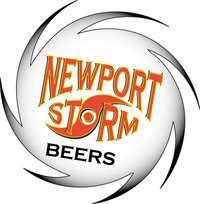
Generally, I'm not a huge pumpkin beer fan, but I wanted to try my hand at brewing one this past fall. I did a fair amount of research on this, finding inspiration and insights from
here and
here, which helped me craft my own variation of this style. I envisioned Colonial New England, crisp fall weather, and changing leaves. I wanted something that was not too heavy and certainly not too spice-laden. I also wanted something with a nice orange color. As is my wont, I eschewed the conventional advice of only using hops for bittering and went ahead with some late additions thinking (accurately IMHO) that the EKG would compliment the pumpkin and the spices.
For the pumpkins, I used 2lbs of pie pumpkins generously donated from the Roger Williams University student organic garden. I did not precook the pumpkins. Instead, I scooped out the innards and cut the pumpkins into chunks and sent them through my Cuisinart with the grater attachment (skin and all). I then combined the grated raw pumpkin with the rest of the grist in the mash.

This was the first attempt at using my new 5-gallon MLT, which I decided to build because of this recipe. I was hoping this would be my first all-grain batch (no sparge, 3.5 gallons), but I missed just about every number possible. I was low on my mash temp so I added some boiling water, but only managed to raise it a couple of degrees. My efficiency sucked, even for no sparge, so I ended up using a pound of extract to make up the difference.
To top it all off, even though I made a starter, my initial pitch of yeast never took off, so after 72 hours of no fermentation I repitched with a packet of dry yeast. Fermentation took off after that.
Even with all the issues, in the end, I think this turned out to be a really good beer. I hit the color dead on and it has a nice solid spicy-ness to it without being too much. Good body. Very tasty.
(the name is based on Nathaniel Hawthorn's short story,
Feathertop)
Feathertop Pumpkin Ale
Brewed on 9/6/10
Recipe Specifications
All Grain, No Sparge, Partial Boil
Batch Size: 3.50 gal
Boil Size: 2.56 gal
Estimated Color: 13.4 SRM
Estimated IBU: 28.7 IBU
Brewhouse Efficiency: 34.00 % (?!?!?!?!?!?!?)
Boil Time: 60 Minutes
OG: 1.052
FG: 1.012
ABV: 5.21%
Grist
5 lbs Pale Malt, Maris Otter - 47.62 %
2 lbs Pumpkin, fresh, raw, grated - 19.05 %
1 lbs Caramunich I - 9.52 %
8.0 oz Melanoidin - 4.76 %
8.0 oz Vienna Malt - 4.76 %
8.0 oz Wheat Malt, Pale - 4.76 %
1 lbs Extra Light DME - 9.52 %
Hops
1.00 oz Goldings, East Kent [4.50 %] (60 min)
0.25 oz Goldings, East Kent [4.50 %] (15 min)
0.25 oz Goldings, East Kent [4.50 %] (1 min)
Spices
0.50 tsp Cinnamon, ground (Boil 1.0 min)
0.50 tsp Nutmeg, grated (Boil 1.0 min)
0.25 tsp Allspice, ground (Boil 1.0 min)
0.25 tsp Ginger, ground (Boil 1.0 min)
0.125 tsp Cloves, Ground (Boil 1.0 min)
Yeast
SafAle US-05
(original yeast WLP001 never took off, so repitched with the SafAle)
Mash Schedule
Single Infusion, 149F, No Mash Out, No Sparge














































